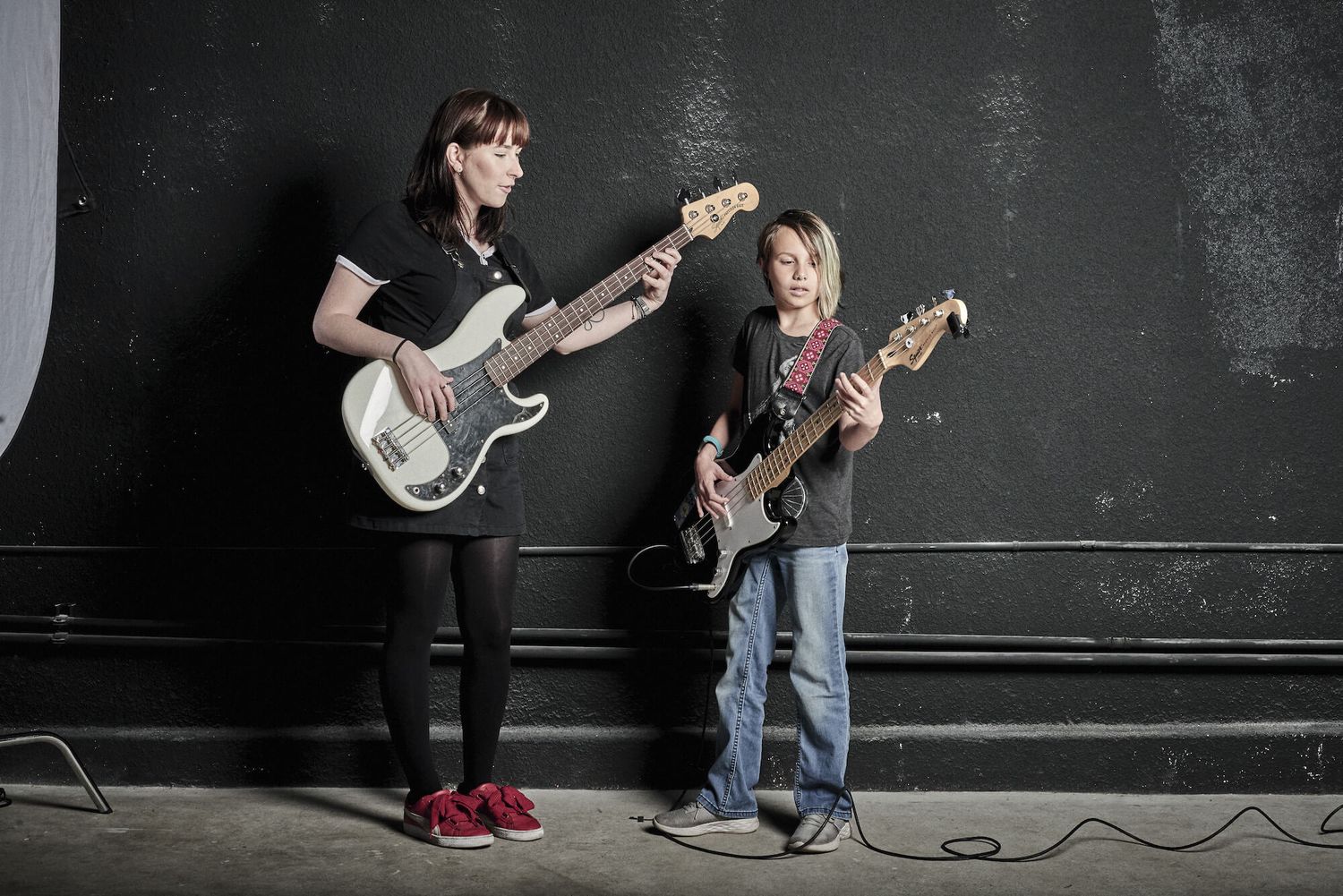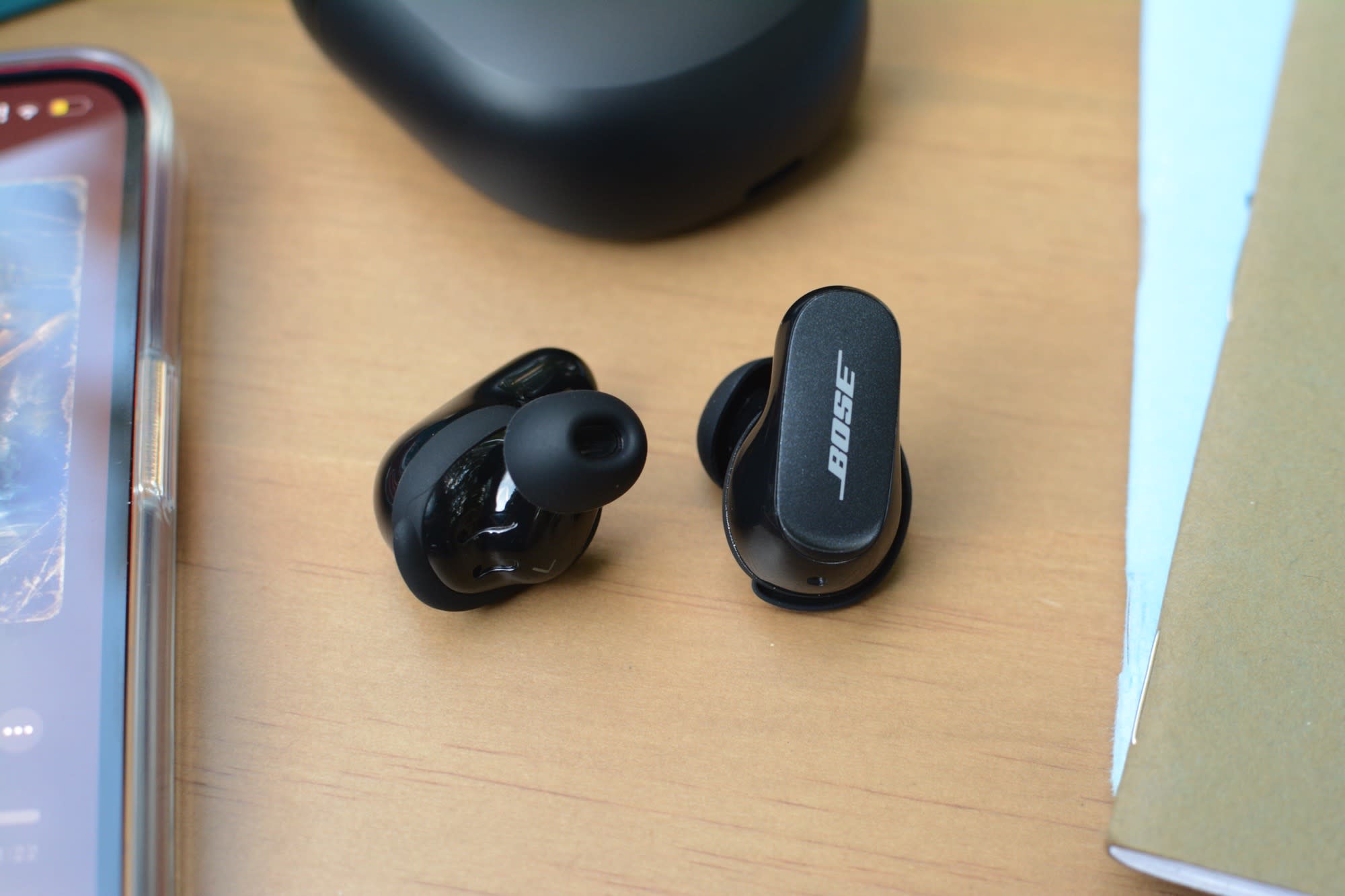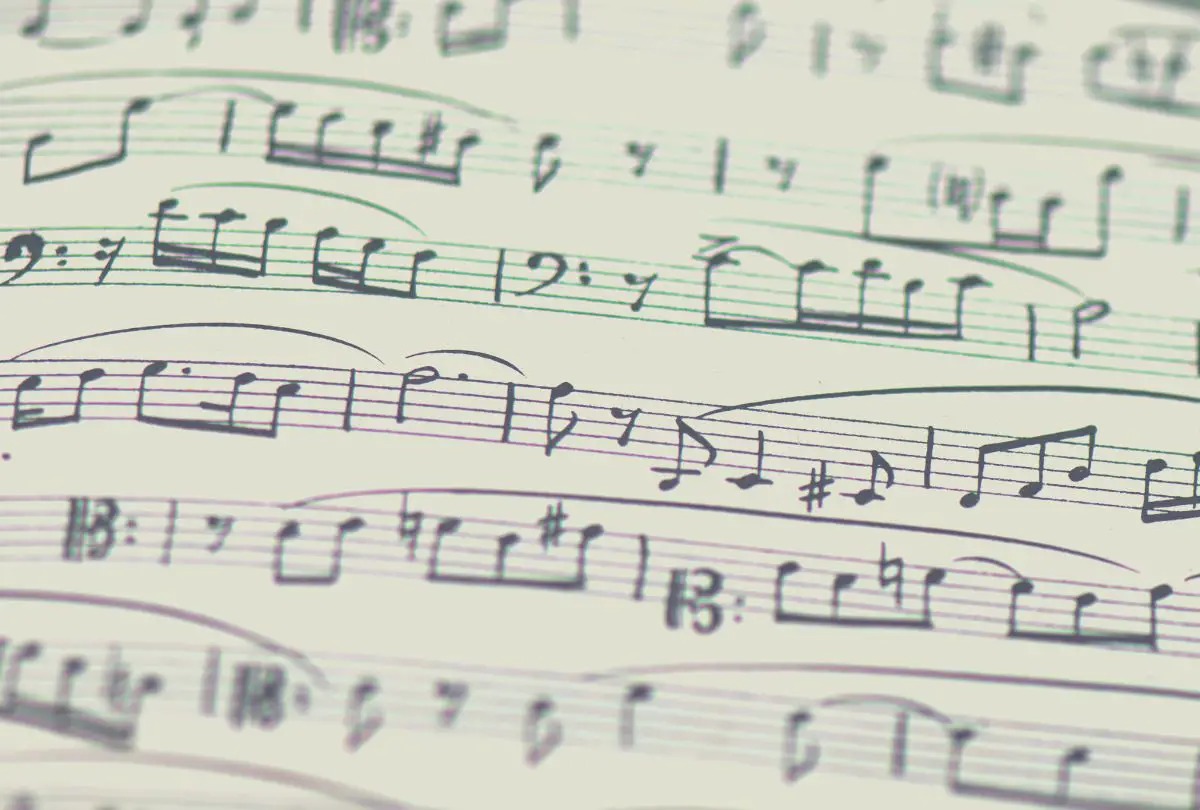Home>Production & Technology>Music Video>How Long Does A Music Video Take To Edit


Music Video
How Long Does A Music Video Take To Edit
Published: November 12, 2023
Learn how long it takes to edit a music video and get insights into the process. Discover the timelines and factors involved in creating a captivating music video.
(Many of the links in this article redirect to a specific reviewed product. Your purchase of these products through affiliate links helps to generate commission for AudioLover.com, at no extra cost. Learn more)
Table of Contents
Introduction
Music videos have become an integral part of the music industry, serving as a powerful visual medium to complement and enhance the listening experience. Behind every captivating music video is a team of skilled professionals, including directors, cinematographers, and most importantly, editors. The editing process is where raw footage is transformed into a visually stunning and cohesive piece of art.
Many factors come into play when determining how long it takes to edit a music video. From the initial pre-production phase to the final post-editing touches, the process involves careful planning, creativity, and technical expertise. Understanding the various stages and the time it takes to complete each one is crucial for both music video creators and artists.
In this article, we will delve into the editing process of music videos, shedding light on the factors that influence editing time and the different phases involved. Whether you are an aspiring artist looking to create a music video or a fan interested in the behind-the-scenes work, this article will provide valuable insights into the world of music video editing.
Understanding the Editing Process
The editing process of a music video is where the magic happens. It is during this stage that the editor takes the raw footage, shot during the production phase, and transforms it into a well-coordinated and visually captivating music video. Editing is not just about joining clips together; it involves meticulous attention to detail, creative decision-making, and technical expertise.
The first step in the editing process is to review and organize the footage. The editor carefully watches all the clips to assess their quality, composition, and relevance to the music video concept. This stage can be time-consuming, especially if there is a large amount of footage to sift through.
Once the footage is organized, the editor begins assembling the video. They select the best shots, arrange them in a logical sequence, and create a rough cut. The rough cut serves as the foundation of the music video and gives an initial glimpse of how the final product will look.
After the rough cut is complete, the editor starts refining the video. This involves trimming unnecessary footage, fine-tuning transitions between shots, and applying basic color correction and grading. During this stage, the editor focuses on achieving a smooth flow, maintaining visual coherence, and enhancing the overall aesthetic appeal of the music video.
Once the main structure of the video is solidified, the editor adds additional elements such as visual effects, motion graphics, and animated text. These elements help bring the music video to life and create a more dynamic and engaging viewer experience.
After incorporating all the necessary elements, the editor proceeds to fine-tune and polish the video. This includes precise adjustments of audio levels, synchronizing the visuals with the music, and ensuring seamless transitions between scenes. The editor may also experiment with different creative techniques, such as split screens or slow-motion effects, to enhance certain moments of the video.
Finally, the music video enters the final stage of the editing process, known as the export and delivery phase. The editor renders the completed video in the desired format, ensuring compatibility with different platforms and devices. This stage also involves delivering the final product to the artist or the production team for review and approval.
The editing process is a delicate balance of technical skill and artistic vision. By understanding its intricacies, artists and music video creators can better appreciate the effort and expertise required to bring a music video to life.
Factors Influencing Editing Time
The time it takes to edit a music video can vary greatly depending on several factors. These factors can impact the complexity and length of the editing process, requiring more time and attention to detail. Here are some key factors that influence editing time:
- Footage Quantity: The amount of footage shot during the production phase has a direct impact on the editing time. The larger the amount of footage, the longer it takes to review, organize, and select the best shots for the final video.
- Complexity of the Concept: If the music video has a complex and intricate concept that requires special effects, green-screen compositing, or elaborate scene arrangements, the editing process will naturally take longer to execute. Incorporating these elements seamlessly and effectively can be time-consuming.
- Technical Quality: The technical quality of the footage can also influence editing time. If the footage has technical issues like poor lighting, shaky camera movements, or audio problems, the editor may need to spend more time correcting and enhancing the footage to achieve the desired visual look and feel.
- Artistic Direction: The artistic vision and direction of the music video can impact editing time. If the artist or director has specific creative requirements or requests, the editor will need to spend additional time ensuring that the final video aligns with their vision.
- Collaboration and Feedback: The time taken to edit a music video can also be influenced by the level of collaboration and feedback between the editor and the artist or production team. Multiple rounds of revisions and feedback can extend the editing process.
- Technical Skills of the Editor: The proficiency and technical skills of the editor play a significant role in determining the editing time. Highly experienced and skilled editors are often able to work more efficiently and effectively, resulting in shorter editing timelines.
It is important to keep in mind that these factors are not necessarily independent of each other. In fact, they often intersect and influence one another. For example, a complex concept may require more footage to be shot, which in turn requires additional time for footage review and selection. Therefore, a holistic understanding of these factors is essential when estimating editing time for a music video.
Pre-Editing Phase
The pre-editing phase is a crucial stage in the music video production process. It involves preparatory work and planning before the actual editing begins. This phase sets the foundation for a smooth and efficient editing process. Here are the key steps involved in the pre-editing phase:
- Concept Development: The pre-editing phase begins with developing a clear concept for the music video. This involves brainstorming ideas, discussing the artistic vision with the artist or director, and creating a storyboard or shot list to outline the visual narrative.
- Shot Planning: Once the concept is solidified, the next step is to plan the shots required for the music video. This includes determining the locations, props, and any specific camera movements needed. Shot planning ensures that the necessary footage is captured during the production phase.
- Organizing and Labeling Footage: As footage is captured during production, it is essential to keep it organized and labeled properly. This helps streamline the editing process by making it easier for the editor to locate specific shots and scenes.
- Collecting Additional Assets: Apart from the primary footage, the pre-editing phase may also involve collecting additional assets like stock footage, graphics, or audio elements. These assets can enhance the visual appeal and storytelling of the music video.
- Communication with the Production Team: During the pre-editing phase, constant communication with the production team is crucial. This includes discussing any specific requirements or considerations for the editing process, coordinating timelines, and ensuring a smooth handover of footage to the editor.
The pre-editing phase sets the stage for a successful editing process by ensuring that all necessary elements and resources are in place. It allows the editor to have a clear understanding of the artistic vision and intentions of the music video, which ultimately helps in delivering a final product that aligns with the artist’s vision.
The Editing Phase
The editing phase is where the raw footage is transformed into a cohesive and visually captivating music video. It is the stage where creative decisions are made, and the visual narrative of the music video comes to life. Here are the key steps involved in the editing phase:
- Footage Review and Selection: The first step in the editing process is to review all the footage that was captured during the production phase. The editor carefully watches each clip to assess the quality, composition, and relevance to the music video concept. The best shots are selected to be included in the final video.
- Assembly and Rough Cut: After the footage review, the editor begins assembling the video. They arrange the selected shots in a logical sequence to create a rough cut. This rough cut serves as the initial version of the music video, giving a glimpse of how the final product will look.
- Trimming and Refining: Once the rough cut is complete, the editor starts refining the video. This involves trimming unnecessary footage, adjusting the timing of shots, and fine-tuning transitions between scenes. The goal is to create a smooth flow and maintain visual coherence throughout the music video.
- Color Correction and Grading: Another important aspect of the editing phase is color correction and grading. The editor enhances the visual aesthetic of the video by adjusting colors, contrast, and saturation. This step helps create a consistent and visually appealing look for the music video.
- Effects and Graphics: Depending on the artistic direction of the music video, the editor may incorporate visual effects, motion graphics, or animated text. These elements add depth and visual interest to the video, elevating its overall impact.
- Audio Integration: The editing phase also involves integrating the audio elements into the video. The editor aligns the visuals with the music, ensuring that the timing and synchronization between the two are seamless. This step is crucial for creating a cohesive and immersive viewing experience.
- Polishing and Finishing Touches: In the final stages of the editing phase, the editor focuses on polishing the video and applying any additional enhancements. This includes adjusting audio levels, adding final touches to transitions, and refining any remaining details to achieve the desired overall look and feel.
The editing phase is a labor-intensive and creative process. It requires careful attention to detail, technical expertise, and the ability to make artistic decisions that enhance the music video’s narrative. The skill and vision of the editor play a vital role in shaping the final product.
Post-Editing Phase
The post-editing phase is the final stage of the music video editing process. It involves the completion of the edited video and the necessary steps to prepare it for distribution and release. Here are the key steps involved in the post-editing phase:
- Review and Feedback: Once the editing is complete, the edited video is reviewed by the artist or the production team. Feedback may be provided, and revisions or adjustments may be requested to ensure that the final product aligns with the artist’s vision.
- Audio Mixing and Mastering: In the post-editing phase, the audio elements of the music video are fine-tuned. This includes balancing audio levels, equalizing, adding effects, and ensuring the overall audio quality is top-notch. Audio mixing and mastering contribute to the overall impact and professionalism of the final video.
- Final Export and Formatting: Once all revisions and adjustments have been made, the final edited video is rendered in the desired format. The video may need to be formatted for specific platforms or devices, such as YouTube, streaming services, or television broadcast. Exporting the video in the appropriate format ensures compatibility and optimal viewing experience.
- Metadata and Tagging: In the post-editing phase, it is important to add relevant metadata and tags to the video. This includes information such as the artist’s name, song title, genre, and other relevant details. These metadata and tags help with search engine optimization (SEO) and make the music video more discoverable.
- Distribution and Release: After the final export and formatting, the music video is ready for distribution and release. This involves uploading the video to appropriate platforms, such as YouTube, Vevo, or the artist’s website, and promoting it through social media channels and other marketing efforts.
- Monitoring and Analytics: Once the music video is released, it is important to monitor its performance and gather analytics. This includes tracking views, engagement, and audience feedback. Analyzing these metrics helps determine the success of the video and provides insights for future music video releases.
The post-editing phase is the final step in the music video editing process, where the edited video is polished, prepared, and released to the world. It requires attention to detail, technical expertise, and a thorough understanding of distribution platforms and marketing strategies. A successful post-editing phase contributes to the overall impact and success of the music video.
Collaborating with the Artist
Collaboration between the editor and the artist is a crucial aspect of the music video editing process. Effective communication and a shared vision between the two parties are key to creating a music video that aligns with the artist’s artistic expression and resonates with their audience. Here are some important considerations for collaborating with the artist:
- Establishing a Creative Dialogue: The editor and the artist should establish a creative dialogue from the beginning. This involves discussing the artist’s vision, expectations, and desired aesthetic for the music video. Understanding the artist’s unique style and the intention behind their music helps guide the editing process.
- Regular Communication: Maintaining regular communication throughout the editing process is crucial. This includes sharing progress updates, seeking feedback or clarification, and discussing any creative decisions or challenges that may arise. Clear and open communication helps ensure that the artist’s vision is accurately translated into the final product.
- Incorporating the Artist’s Input: The artist’s input and feedback are valuable in shaping the music video. The editor should be receptive to the artist’s suggestions, ideas, and preferences, while also providing their own expertise and creative insights. Collaborative decision-making leads to a more authentic representation of the artist’s music and message.
- Respecting Deadlines and Timeframes: It is essential for both the editor and the artist to respect deadlines and agreed-upon timeframes. Keeping a timeline helps ensure a smooth editing process and allows for timely delivery of the final product. Regular updates on the progress and any potential delays should be communicated promptly.
- Revision and Feedback: Feedback and revision rounds are a natural part of the collaboration process. The artist may request changes or adjustments to certain scenes, transitions, or visual elements. The editor should be receptive to these requests and work collaboratively to address them while maintaining the overall artistic integrity of the video.
- Promoting Creative Experimentation: Collaborating with the artist involves promoting a sense of creative experimentation and exploration. The editor can suggest unique visual ideas, innovative editing techniques, or creative effects that enhance the music video. Encouraging the artist to take risks and think outside the box can lead to captivating and memorable visuals.
A successful collaboration between the editor and the artist is built on mutual trust, open communication, and a shared commitment to realizing the artist’s vision. Working closely together throughout the editing process leads to a music video that truly reflects the artist’s artistry and connects with their audience.
Conclusion
The art of music video editing is a meticulous and creative process that brings together various elements – from footage selection and arrangement to color grading and visual effects – to create a visually captivating and cohesive music video. Understanding the different phases of editing, along with the factors that influence editing time, is essential for both music video creators and artists.
Throughout the editing process, collaboration with the artist plays a crucial role in ensuring that the final product aligns with their artistic vision. Effective communication, regular feedback, and incorporating the artist’s input help create a music video that truly represents their musical identity and resonates with their audience.
Factors such as the quantity of footage, complexity of the concept, technical quality, and the skill of the editor all influence the time it takes to edit a music video. Planning and organization during the pre-editing phase help streamline the editing process, while the post-editing phase focuses on finalizing the video and preparing it for distribution.
Music video editing is a blend of technical expertise and artistic expression. It requires attention to detail, creative decision-making, and a deep understanding of the artist’s vision. By collaborating closely with the artist and following a systematic editing approach, editors can create music videos that elevate the artist’s music, engage viewers, and leave a lasting impact.
Whether you’re a music video creator or a fan of music videos, understanding the intricacies of the editing process enhances your appreciation of the artistry and effort that goes into creating these visual masterpieces.











